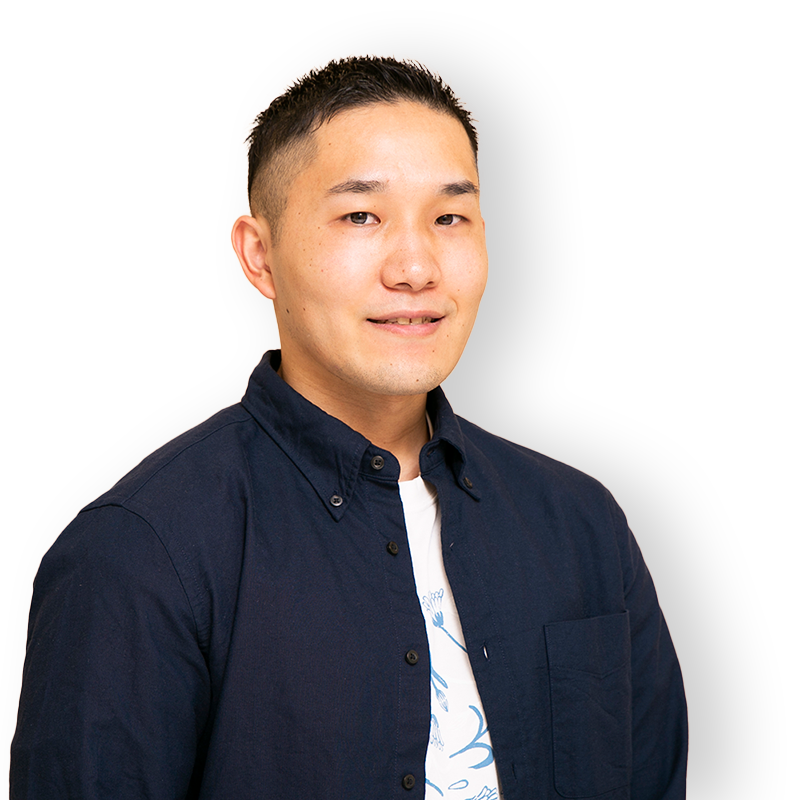A corporate culture where you can demonstrate your individual strengths
I've loved games since I was a child and when I was a university student, I was captivated by how VR games pull you into the game's world. Back then, head-mounted displays were attracting a lot of buzz, so I thought it'd be cool if there were a device that stimulated the senses beyond simply sight for an even more immersive experience. As such, I joined a research laboratory focused on VR.
There, I worked on a device that let you feel the things you were seeing in VR. Because this fell outside the scope of the university's Faculty of Informatics, I took it upon myself to learn how to design devices. However, it was this experience and the sheer joy I found from engineering devices that drew me to my current profession.
It was a company information session when I bumped into SEGA. It piqued my interest when I heard them describing it as an open corporate culture. When I spoke to the senior employees there at the time, I noticed the vibrant spirit in the atmosphere—and I felt that it was the right kind of place for me. Having joined SEGA, it turns out I was right. While I get advice from the senior employees, I get to make decisions that advance our work, like determining our approach or the components needed for our blueprints. It's a great motivator to have free rein in making my own decisions.
At SEGA, we have the freedom to demonstrate what we can do.
Working hands-on to create arcade games as a team
Currently, I work on the blueprints for arcade medal games. In particular, I handle the control panel that players get to interact with. My work spans from drawing components with 3D CAD software to parts assembly and inspection of the finalized component. I had a chance to work with CAD when I was a student, so it found easy to use.
When designing blueprints, I have to put myself in the shoes of the player. From the very initial stages of development, the Control Panel Team has to consider the optimal button layout and height for both children and adults to enjoy the game.

Safety is also important. For example, among the parts that players interact with, is there anywhere they can get hurt? My work now involves preparing internal parts of arcade cabinets and planning the mechanical gimmicks in the games. The journey to bring a game from its planning stages to its finalized release is a long process, which often takes around three years.
It takes a team of roughly six mechanical engineers, three or four electrical engineers, two designers, and one manual writer to develop an arcade cabinet. Each of us works with hustle and cheer. I work side by side with the senior members of my team, so it's very easy to reach out for questions. We all have different opportunities to discuss technical specifications and issues, so there's times where our opinions still make a difference even when they're not directly linked to one of our tasks.
Learning from SEGA's long history and striving towards new technology
The team at SEGA has an immense pool of technical expertise at their disposal. We've definitely got a wealth of knowledge about mechanical gadgets and reliable troubleshooting skills from having to rectify past issues.
It's easy to take this for granted, but I firmly believe SEGA's enduring popularity is attributed to the extensive knowledge we've built up over the years.

Speaking of technical trouble, we've definitely had our share of woes during on-site tests when we put new cabinets into arcades for testing. There was a time when a customer was playing a coin-pusher game and the coin slot got jammed. We hurriedly brought the game back to our studio and worked out a solution to improve it. Sure, it'd be better if we didn't experience any issues at all, but there's a lot we can learn from failure.
Running tests over and over again to improve its functionality may seem cumbersome, but it's definitely worth the effort to see the joy it brings to children during our on-site tests.
My current goal is to release a game that people of all generations will go out of their way to play. The appeal of designing game machines is trying to create a fun experience that allows full-body engagement. I want to use new technologies to create an innovative game that will instantly grab the player's attention and make them feel like they've never played a game like it before.
*This interview was conducted during the second year of employment.
10:00 AM Arrive at the office and check my emails and tasks.
10:30 AM Department meeting to share updates. If there's any time, I work on blueprints.
12:30 PM Lunch with team members. If I'm busy, I postpone my break.
1:30 PM Continue working on the blueprints that I started working on in the morning.
3:00 PM Assemble prototype game for research and give it a test run.
5:00 PM Project meeting.
7:00 PM Head home. On the way, I stop by the gym for a work out.

STAFF INTERVIEWS
















